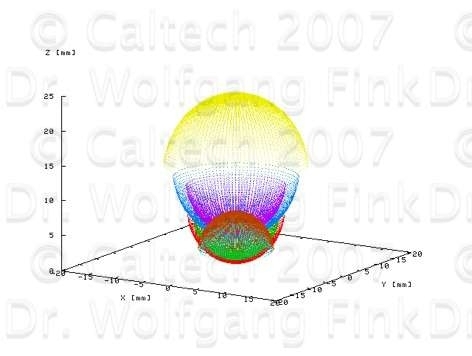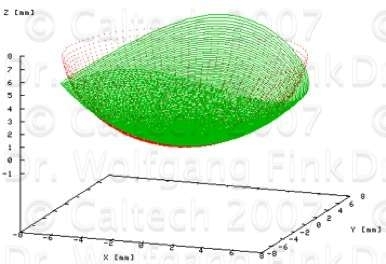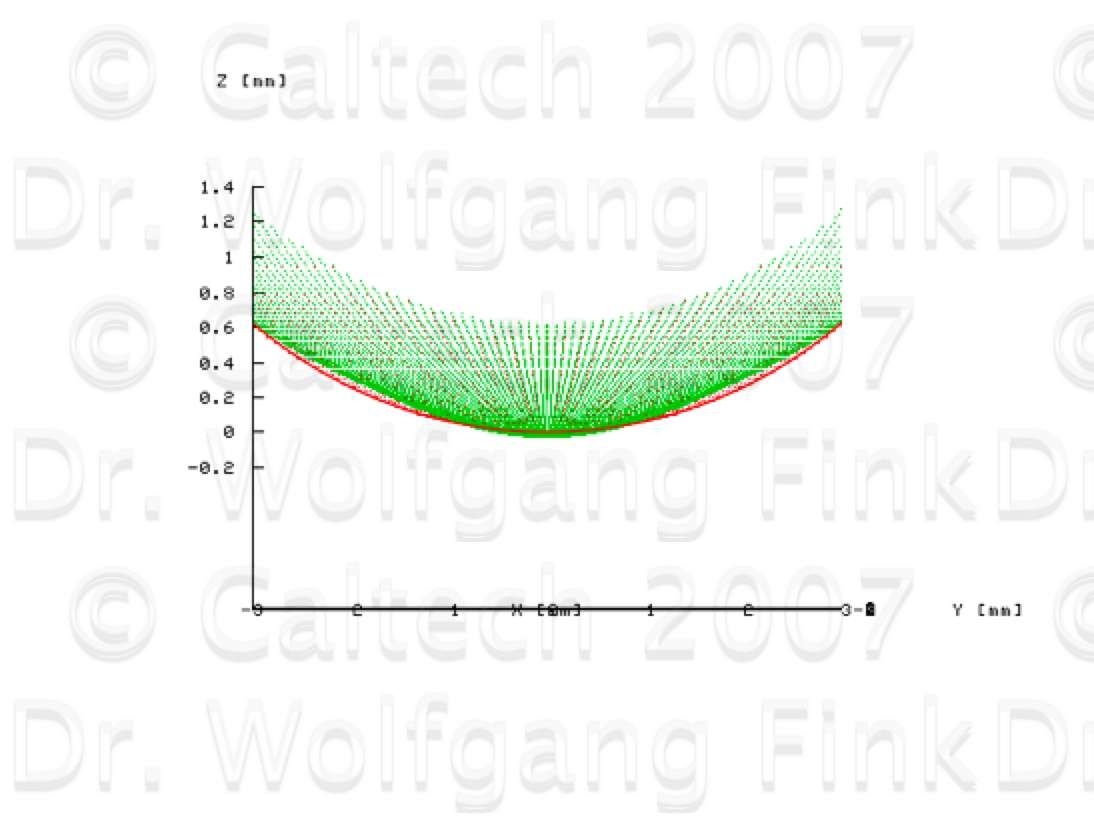simEye: Computer-Based Simulation of Visual Perception under Various Eye Defects using Zernike Polynomials
Purpose: We describe a computer eye model that allows for aspheric surfaces and a three-dimensional computer-based ray-tracing technique to simulate optical properties of the human eye and visual perception under various eye defects, both as still-images and as animated movies.
Methods: Eye surfaces, such as the cornea, iris, eye lens, and retina, are modeled/approximated by a set of Zernike polynomials that are fitted to input data for the respective surfaces. A ray tracing procedure propagates light rays using Snell's law of refraction from an input object (e.g., digital image) through the eye under investigation (i.e., the eye with modeled eye defects) to form a retinal image that is upside-down and left-right inverted. To obtain a first-order realistic visual perception, this retinal image is then back-propagated through a defect-free eye (e.g., Gullstrand eye model) to an output screen with the same dimensions and at the same distance from the eye as the input object, resulting in a right-side up image.
Results: The visual perception under emmetropia, regular astigmatism, irregular astigmatism, and (centralized) keratoconus is simulated and depicted. Further, the ray tracing procedure has been applied to the individual frames of a movie to result in the motion-depiction of the above eye defects.
Conclusions: The computer ray tracing tool developed here (SIMEYE) permits simulations of the optical properties of the human eye and of visual perception under various eye defects, both as still-images and as animated movies. SIMEYE allows for the introduction of arbitrary surfaces (e.g., aspheric surfaces), represented/fitted by a set of Zernike polynomials, in the ray tracing simulation. SIMEYE may have a wide range of applications in both science and education. This tool may help educate/train both the lay public, e.g., patients before undergoing eye surgery, and people in the medical field such as medical students and professionals. Moreover, SIMEYE may be used as a scientific research tool to investigate the visual perception under a variety of eye conditions, in addition to the ones presented here, and after various ophthalmic surgical procedures such as cataract surgery and LASIK.
Schematic view of the normal human eye

Zernike-surface based Gullstrand exact schematic eye model

Schematic view of 3D ray tracing procedure

Zernike-surface of an aspherical cornea

Original image
Place your mouse over the image to see:
Simulation of emmetropic visual perception (aspherical cornea)
Zernike-surface of a regular astigmatic cornea

Original image
Place your mouse over the image to see:
Simulation of visual perception under regular astigmatism
Zernike-surface of a central symmetric keratoconus

Original image
Place your mouse over the image to see:
Simulation of visual perception under irregular astigmatism
Zernike-surface of a central symmetric keratoconus

Original image
Place your mouse over the image to see:
Simulation of visual perception under central symmetric keratoconus
Wolfgang Fink, Ph. D.
Senior Researcher at Jet Propulsion Laboratory (JPL)
Visiting Research Associate Professor of Ophthalmology at University of Southern California (USC)
Visiting Research Associate Professor of Neurosurgery at University of Southern California (USC)
Visiting Associate in Physics at California Institute of Technology (Caltech)
Mailing Address:
California Institute of Technology
Visual and Autonomous Exploration Systems Research Laboratory
15 Keith Spalding (corner of E. California Blvd & S. Wilson Ave)
Mail Code 103-33
Pasadena, CA 91125
USA
Phone: 1-626-395-4587
Fax: 1-626-395-4587
E-mail: wfink@autonomy.caltech.edu

